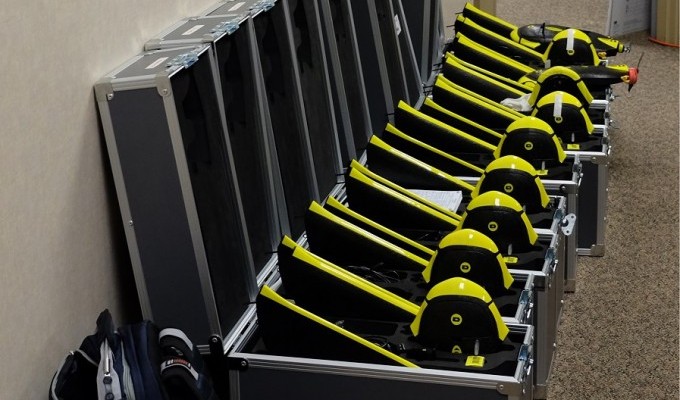Instead, invest in a fleet of drones. (Apologies for the clickbait headline!)
While I was talking to a surveyor whose firm employs UAS in their work, he mentioned the different models of the craft they have. I interrupted him: “Just how many drones do you have?”
“16” was the answer. This got me thinking about the advantages of owning a fleet of UAS.
Redundancy equals reliability. While most of us won’t be buying a fleet of 16 UAS anytime soon, having at least one backup is always a good idea. With the exception of one-person operations, most surveying firms have multiple total stations, GNSS receivers, field trucks, and so on. The same holds true for UAS. Having a second drone as a backup is prudent; after all, anything that flies can crash. Our customers look to us for solutions, not excuses. Continuity of service is paramount in a competitive business environment.
More drones equal a wider scope of services. If you have a fixed-wing craft for mapping larger areas, adding a multirotor UAS could open the door to offering more services. Inspection of infrastructure, for example, is a booming application and one that multirotor craft are well suited for. The reverse is true; if you already have a multirotor for close-in work, adding a fixed-wing UAS could be your entrée to wide-area mapping and even precision-ag applications.
The challenge of fleet acquisition and management is largely financial. This goes double (literally) with fleets comprised of fixed-wing and multirotor craft. Another concern is operational; learning to fly different craft adds to your training burden. A tip from the aforementioned PLS is to purchase your fleet from one manufacturer. Having a common operational interface helps reduce training time and costs.
Still, that leaves the initial outlay of capital of purchasing multiple UAS. One tactic might be to negotiate a lower per-unit cost for a purchase of two or more units at the same time. Never hurts to ask, right? Leasing is becoming an increasingly popular option as well; senseFly announced a leasing option last year.
In the meantime, here are options to consider if you can’t cough up the capital for a fleet at this time.
1) Make sure you have plenty of spare parts for your UAS. Batteries are pretty much a given; your flight mission times depend on batteries, so have plenty on hand as well as chargers. Buying extra rotors are the second item you’ll probably need. After that, take a look at the manufacturer’s website for spare parts for your particular craft; what they have online is probably a good indicator of the parts that break the most.
2) Buy a service package; senseFly has a package called “Always On” for its eBee drones that offers 48-hour drone replacement, extended warranties, and free maintenance checks.
3) In a few more months, firms will start the 2018 budgeting process. Start the conversation about putting additional UAS craft into next year’s budget.

This article appeared in xyHt’s e-newsletter, Pangaea. We email it twice a month, and it covers a variety of unusual geospatial topics in a conversational tone. You’re welcome to subscribe to the e-newsletter here. (You’ll also receive the once-monthly Field Notes newsletter with your subscription.)

